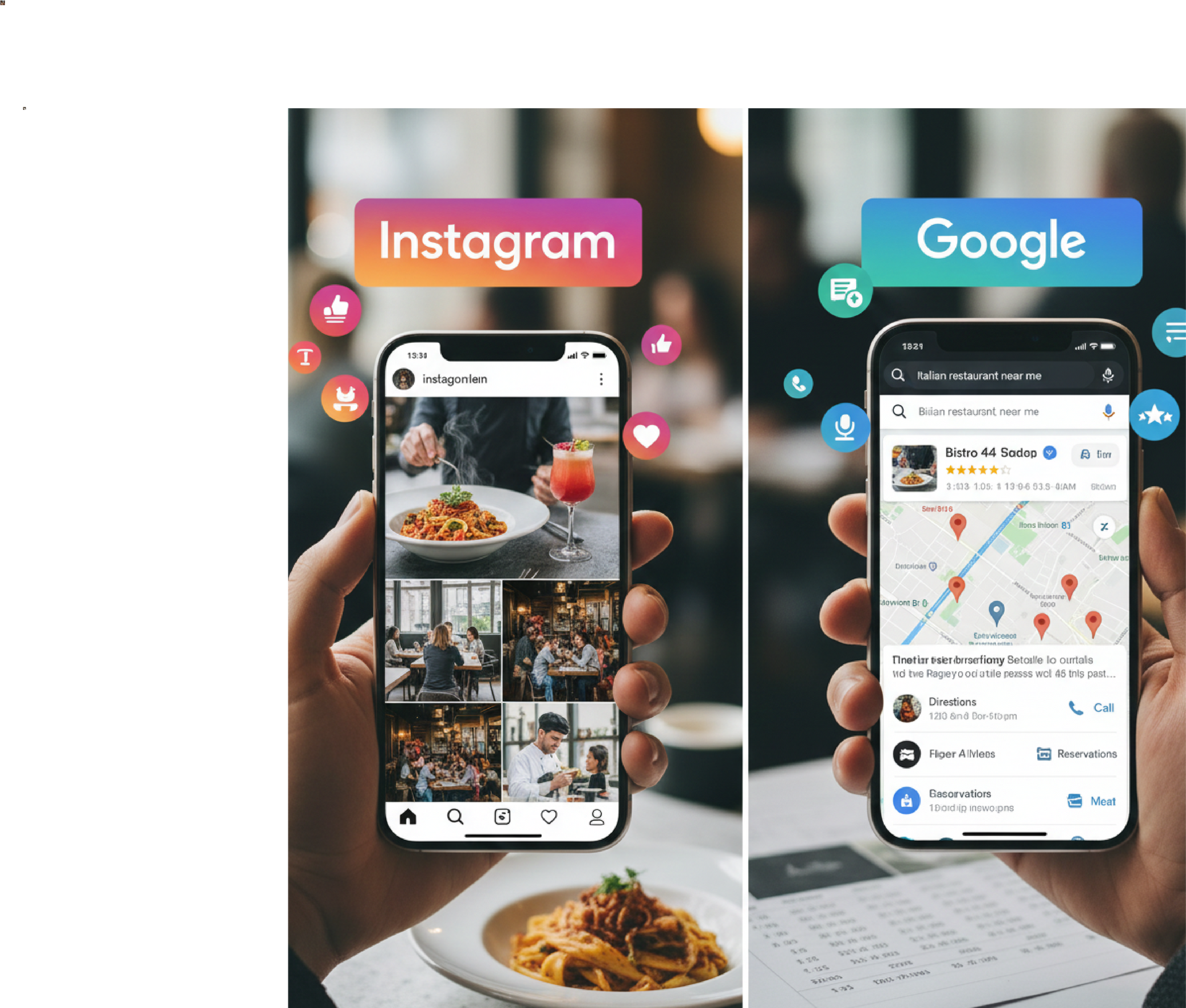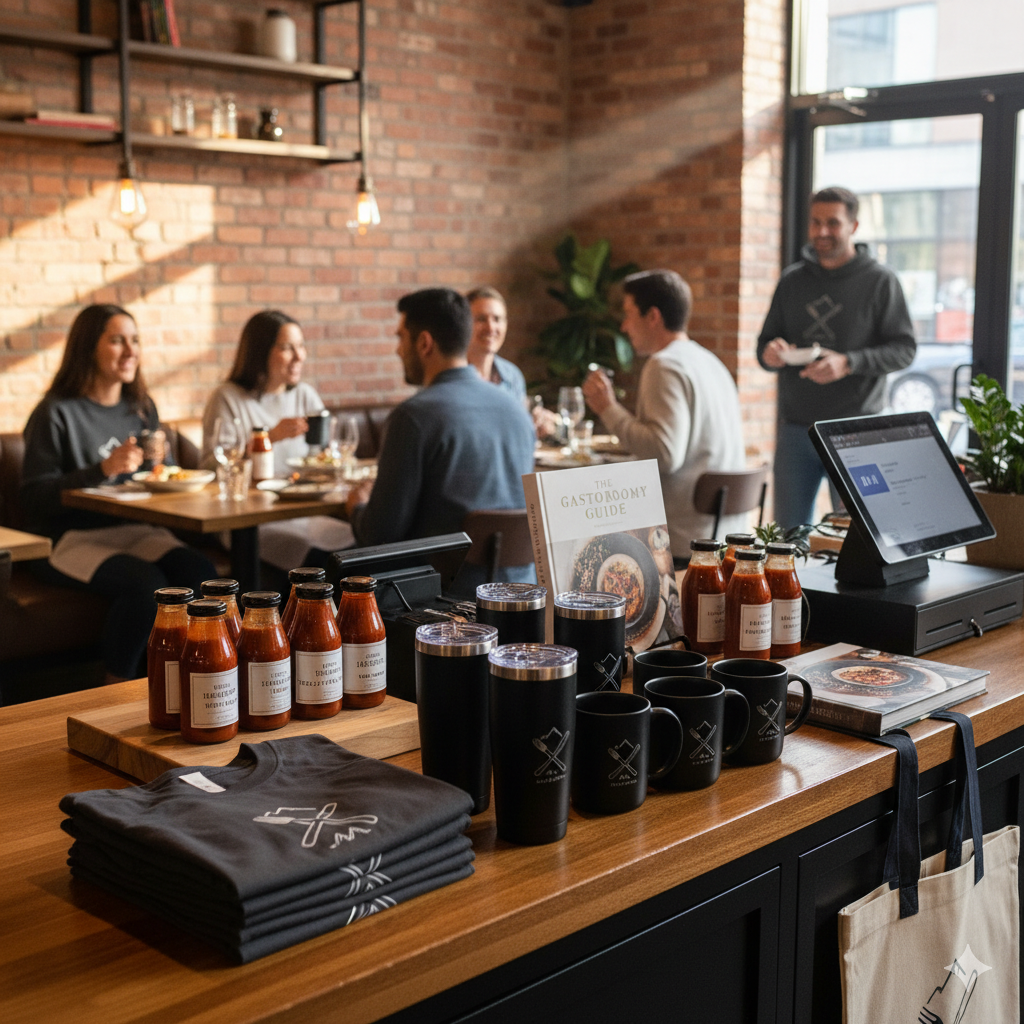Blog
Navigating the Supply Chain in the Restaurant Industry
The current challenges of sourcing and securing food and paper supplies for restaurants is the biggest challenge facing operators.

Since the start of the pandemic, safety measures such as social distancing, lockdowns and mask-wearing have completely changed our understanding of how consumers spend on food. We saw customers stockpiling on groceries and supplies in homes instead of going out to eat, raising retail sales by 29 percent over the previous year (1). Meanwhile, sales at cafes, fast-food restaurants, coffee shops, and casual-dining establishments fell by 27 percent.
According to this McKinsey Report, these “changes in consumer behavior continue to ripple through the US food and agricultural supply chains” even today (1). That’s because the supply chain is similar to a system in that each component must work well for the overall network to function. And in a system as large as the US Food System, small changes produce a proportionally larger domino effect, where “one occurrence triggers a chain of subsequent events” with the potential to bring the overall structure down (1).
What are causing these disruptions in the US food supply chain?
Shortage of workers is one reason. Growing and farming vegetables, meat, fruit, for example, is a crucial step in the supply chain. Many farming businesses, including crop producers, require specific types of labor to perform their tasks (2). Since so many workers are being afflicted with COVID-19, we’ve seen the farming sector experience a widespread shortage of workers who have been trained to complete specific tasks.
Regulation is another issue, as additional rules are needed to ensure that employees are safe and paid adequately while ensuring that the food is safe to eat. Unfortunately, measures set up to safeguard health have overall caused inefficiency and higher prices, which regrettably have caused layoffs for food workers and drivers (3).
Inventory Estimates. It has also been a time-consuming and challenging process to develop an efficient inventory estimate as many businesses had to rely on historical data over current patterns. This has resulted in under-ordering (and dissatisfied customers) or over-ordering (and increased waste).
A lack of communication is possibly the most overlooked problem affecting the supply chain. Even though the ability of supply chain actors to interact has vastly improved as technology has progressed, the sector continues to face numerous issues due to lack of communication due to the fragmentation of the food system and the supply chain (4). For example, each business works with its own logistical system, data-sharing practices and government regulations (or lack thereof) they must follow. This can result in problems with communication and the capacity to work together when issues arise.
Lack of transparency and miscommunication among workers (particularly regarding COVID-19) also continue to cause delays and disruptions in the supply chain. In addition, many restaurants and their vendors do not have access to tools that allow them to see their stock supply and demand in real time (5). What this means is that the relationship between the operator and vendor can be strained as a result of poor inventory control. Problems such as over or under-ordering, food waste, supplier unpredictability, negative customer satisfaction and impact on the restaurant’s reputation can all stem from ineffective inventory management (5). Unfortunately, these issues will remain without a simple, centralized means to provide feedback about the quality of food supplied and the service provided through delivery.
How supply chain disruptions impact us now
Supply chain disruptions are resulting in food insecurity and public health concerns across the world (6). And while food supply chains that are capital-intensive and highly mechanized (for staple crops like wheat, maize, and soybeans) have continued to operate with minimal interruptions in the US, we’re seeing labor-intensive food production like meat supply continue to fall behind (2).
Take the current chicken wing shortage as an example: consumer demand for chicken during the epidemic, as well as supply chain constraints, have driven up poultry rates this springtime (7). Suppliers have trouble finding enough personnel, and fast food restaurants’ “chicken sandwich wars” have pushed demand even higher. Prominent chain restaurants such as KFC, Bojangles, Buffalo Wild Wings, and even some smaller bars and restaurants are currently failing to meet the demand for chicken wings and other items (8).
In fact, Chicken wings are at their lowest level in a decade in frozen storage. “A pound of chicken wings cost $2.65 in the first week of February, up 10 cents from the previous week. Wings for $2.27 per pound kicked off the year.” Basically, wing inflation or shortage is happening because the demand for wings increases in the market, causing major supply chain disruptions. Experts say that it will take about a year for the chicken (and wings) supply to normalize (9).
How to overcome supply chain issues
Here are the top three actionable steps we think will help operators overcome the supply chain crisis.
Multiple Sourcing and Backup
Operators should consider having multiple distribution channels in case they experience shortages. In one study of choosing between single and multiple sourcing based on supplier default risk, it was found that single sourcing had the advantage of a strong partnership between buyer and suppliers while lowering purchase price, but that this dependency created vulnerability and increased risk of supply interruption (11). Meanwhile, multiple sourcing was found to help operators “reduce the probability of bottlenecks due to insufficient production capacity to meet peak demand.” It also had the advantage of allowing the operator to have alternative sources of materials in case of the delivery stoppage by the supplier, as well as the flexibility and agility to react to unexpected events that could disrupt the supplier’s capacity (11).
Alternatively, you can brainstorm on ways to substitute ingredients or supplies you can’t do without. “You should communicate with your supplier for when a product cannot be delivered,” said Meredith Yerkes, Vice President of Business Development in Supply Chain at Consolidated Concepts in Boston, MA (10). Operators can also think of ways to utilize the ingredients you already have or using ready-made pre-cut items to save on labor.
Thus, the best operational strategy for supply chain disruptions is considering the worst-case scenario and establishing backup plans for when your supply has been compromised.
Menu Changes and Flexibility
One thing you can do when you run into supply shortages is simply “go to the market and do with what you’ve got” (12). This is precisely what Akash Kapoor, CEO of Bay Area-based franchise Curry Up Now, has been doing to get around the problem of ingredient deficits.
By being flexible and agile with their menu options, operators can simplify and shrink down their menus to feature ingredients that are less subject to volatility.
While an operator may believe that losing their specialty products and items that differentiates them from the competitors may also lose their competitive edge, the key is to focus on guest experience (10).
Communication
Operators should constantly be communicating with their suppliers. According to Tim Hand and Bruce Reinstein from Kinetic12 Consulting in their interview with FSR Magazine, operators should “reach out to their top suppliers for assistance on driving both front-of-house and back-of-house efficiencies. This can include streamlining the food preparation process through labor-saving products, new equipment innovation, new order-taking technologies, supply chain simplification ideas and finding efficient no-touch solutions for self-serve condiment and beverage stations” (13).
Another important consideration for operators is communicating to the staff about their supply status. For example, if your supply shortage prevents you from including certain items in the employee meals, do they understand why? What about issues concerning reducing food waste? Having a transparent, honest relationship with your staff, suppliers and customers will help your business tremendously in the long run.
Conclusion
Although acute ingredient shortages have subsided and we’re seeing all supply chain participants (manufacturing companies, wholesalers, and fast food joints) quickly adapting to this uncertain climate, those who are planning ahead, developing contingency plans, and learning how to be creative and flexible will most undoubtedly be in a position to weather out the supply chain instability.
References:
- https://www.mckinsey.com/industries/consumer-packaged-goods/our-insights/us-food-supply-chain-disrup...
- https://www.sciencedirect.com/science/article/pii/S0305750X21000176
- https://www.ncbi.nlm.nih.gov/pmc/articles/PMC7499675/
- https://doi.org/10.3390/logistics5010007
- https://doi.org/10.1111/cjag.12279
- https://www.ifpri.org/news-release/economic-and-food-supply-chain-disruptions-endanger-global-food-s....
- https://www.cbsnews.com/news/chicken-shortage-restaurants-nationwide/
- https://www.forbes.com/sites/sarahhansen/2021/05/08/from-chicken-wings-to-mothers-day-flowers-here-a...
- https://www.restaurantbusinessonline.com/operations/massive-chicken-wing-shortage-brewing
- https://goliathconsulting.blog/2020/06/15/responding-to-covid-19s-impact-on-the-restaurant-supply-ch...
- https://www.researchgate.net/publication/240167996_Choosing_Between_Single_and_Multiple_Sourcing_Bas...
- https://www.berkeleyside.com/2020/05/18/east-bay-restaurants-brace-for-instability-in-food-supply-ch...
- https://www.fsrmagazine.com/expert-takes/simplification-covid-19-era-what-it-means-restaurants-and-s...











